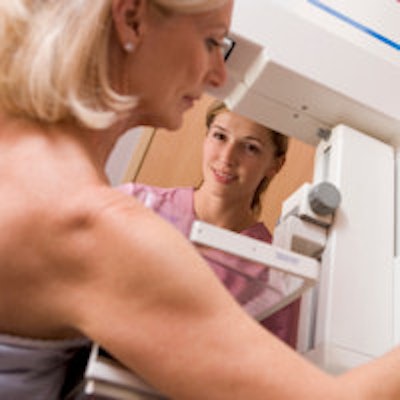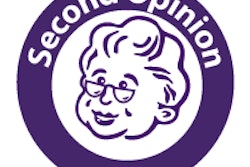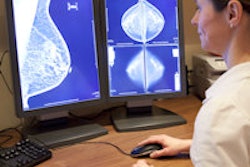
Giving women more information about the negative aspects of mammography, such as overdiagnosis, makes them less inclined to want breast screening, according to a new Australian study published online February 17 in Lancet.
After reading a decision aid that included information about overdiagnosis and other negative aspects of screening, the number of women who said they intended to get screened fell by 18%, the researchers found.
The results indicate what happens when women make "informed choices" about their health, according to the group from the University of Sydney.
The harms of overdiagnosis
Mammography screening can reduce a woman's risk of dying from breast cancer, but it also includes the risk of overdiagnosis or overdetection -- that is, finding and treating cancer that would not have presented clinically in the patient's lifetime. This can harm women physically and emotionally, wrote lead author Jolyn Hersch and colleagues.
 Jolyn Hersch from the University of Sydney.
Jolyn Hersch from the University of Sydney."The growth in attention about overdetection has highlighted the importance of ensuring that healthy women invited to breast screening are informed clearly about the potential for both benefit and harm," they wrote. "Momentum is shifting from uninformative and persuasive approaches to screening to clear and balanced information, giving people the opportunity to make informed choices based on their assessment of the trade-offs between potential outcomes."
But is "clear and balanced" information about overdiagnosis actually being disseminated? Not necessarily, Hersch told AuntMinnie.com via email.
"We know from previous work that most women are unaware that screening can detect inconsequential disease, leading to overdiagnosis and overtreatment," she said. "We conducted this study to investigate whether including information about overdetection of breast cancer in a decision aid would help women aged around 50 years -- which is when screening is initiated in Australia and many other countries -- to make a more informed choice about breast screening."
Informed choice
Between January and July 2014, Hersch's team performed a randomized controlled trial with a cohort of 879 women between the ages of 48 and 50. Subjects were recruited by telephone; they were eligible if they had not had a mammogram in the past two years and did not have a personal or strong family history of breast cancer (Lancet, February 17, 2015).
The women were randomly assigned to receive either an interventional decision aid or a control decision aid. The interventional decision aid was developed by Hersch's group and included evidence-based information on overdiagnosis, breast cancer mortality reduction, and false positives. The control decision aid only included information on mortality reduction and false positives.
Of the total study cohort, 409 women were assigned to the intervention group and 408 were assigned to the control group (62 subjects were lost to follow-up or did not answer questions completely).
The authors described the study's primary outcome as "informed choice about breast screening," which they measured with a test that assessed the women's understanding of factors such as mammography's mortality benefit, false-positive rates, and overdetection rates.
To assess outcomes, Hersch and colleagues conducted telephone interviews with the women three weeks after they had received the material.
"Our resources were designed to support women to make informed choices, not to push them towards or away from screening," the authors wrote.
Study results included the following:
- 24% of women in the intervention group made an informed choice, compared with 15% in the control group.
- 29% of women in the intervention group met the threshold for adequate overall knowledge, compared with 17% in the control group.
- 69% of women in the intervention group expressed positive attitudes toward screening, compared with 83% in the control group.
- 74% of women in the intervention group intended to be screened, compared with 87% in the control group -- a difference of 13 percentage points, or 18%.
The decision aid containing explanatory and quantitative information on overdetection increased women's knowledge and enabled them to make an informed choice about breast screening, compared with the control aid that did not include this information, Hersch told AuntMinnie.com.
"Our decision-support materials were carefully developed and extensively piloted to try and maximize comprehension, so we were pleased with the results showing that women can understand overdetection information and incorporate it into their reasoning about screening," she said. "The results also suggest that becoming better informed about potential consequences might mean women are less likely to choose to undergo breast screening."
The study findings underscore the importance of striving to meet the ethical responsibility to inform women and help them make screening decisions according to their informed preferences, the researchers concluded.
"It's difficult to weigh the benefits and harms of breast cancer screening," Hersch told AuntMinnie.com. "Women's opinions will vary, and that is why it's important to help them make an informed choice. Our study did not try to address questions about if/when/how mammography screening is appropriate. But our finding that some women make different decisions when they are given clear information about overdetection underscores the ethical responsibility we have to fully inform women about the downsides as well as the upsides of breast screening."



















